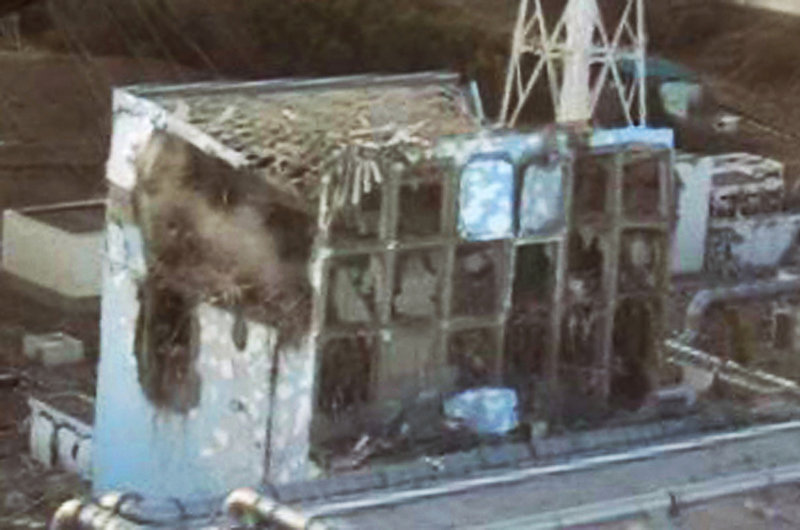Time, power, water and people.
That’s all that’s needed to control the deteriorating seaside Fukushima Dai-ichi nuclear power plant in Japan.
It sounds so simple, yet each presents challenges.
Over the past week, the facility has careened out of control with a bewildering sequence of explosions, malfunctions, fires and, in all likelihood, partial reactor core meltdowns.
Plumes of radioactive steam rise from the site, and satellite photos show heavy damage to three of the facility’s six reactor buildings. Radiation readings have been so high that the operating company, Tokyo Electric Power Co. — Tepco — has pulled back most emergency workers.
But nuclear experts say that with each passing day, the emergency at Dai-ichi creeps closer to stability. That’s because time is on Japan’s side — at least in regard to the reactor cores themselves.
• When the earthquake hit last week, control rods automatically dropped into the three operating reactors, stopping their nuclear chain reactions. Even so, the tightly bundled fuel rods in the cores are continuing to radioactively decay, throwing off the heat and radiation that crews have so desperately battled.
With each day, though, the energy thrown off by the fuel rods decreases exponentially. They become easier to control with the seawater pumped into them. The challenge with time is that the facility continues to emit radiation.
• As for electrical power, restoring it should be “top priority,” said Mark Pierson, a nuclear engineering professor at Virginia Tech.
Restoring power would dramatically enhance the facility’s cooling abilities, nuclear experts said. The total loss of primary, backup and battery power — a blackout state long feared by nuclear plant operators — precipitated the crisis by crippling the facility’s crucial pumps.
On Thursday, the International Atomic Energy Agency announced that a half-mile-long power line had been laid to Fukushima Dai-ichi’s Unit 2 reactor building, but it did not say whether power had been restored.
Japan’s nuclear agency said Friday it hopes to restore electricity to the plant’s units 3 and 4 reactor buildings by Sunday.
Delivering power during the crisis is far more complicated than plugging in a cord. Existing cabling is probably burned, meaning crews in bulky radiation suits will have to engineer a high-voltage solution on the fly by boring through thick outer walls and connecting car-size electrical switches and relays.
• The challenges of delivering water to the various areas of the stricken facility are now well-known. Seawater injections into the reactor cores have already begun, a measure considered a last gasp to cool the overheating reactors.
Uranium fuel rods stored in pools above the reactors also need to be covered with water to prevent overheating and massive releases of radiation. The televised images of helicopters trying to dump water onto the pools shows the desperation of the Japanese to keep water in those pools.
But if water or other coolants can be delivered to the reactor cores and the fuel pools, the situation will stabilize. “The crisis phase … is over as soon as they have reliable supplies of water,” said David Helwig, a nuclear engineer who used to work for GE.
• Delivering emergency power and water, of course, requires work crews — the final challenge. High radiation at the site has forced Tepco to pull back most of its workers. Those left are presumably rotating to limit their radiation exposure.
After workers get exposed to annual radiation limits, they are supposed to be “retired” and sent away from radiation for a year. That means a large crew of experienced workers will be needed to carry out the ongoing — and improvised — measures.
“You want hundreds coming in and out,” said David Albright, president of the watchdog Institute for Science and International Security in Washington. “Each one does a little job for a short time.”
Depending on radiation readings, that time could be very short.
As a young naval officer in 1952, former President Carter responded to a reactor emergency in Canada. Wearing protective gear, he ran toward a partially melted heap of uranium, cleaned up what he could and ran out after receiving his yearly permitted dose of radiation — in one minute and 29 seconds.
Send questions/comments to the editors.



Comments are no longer available on this story